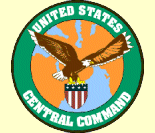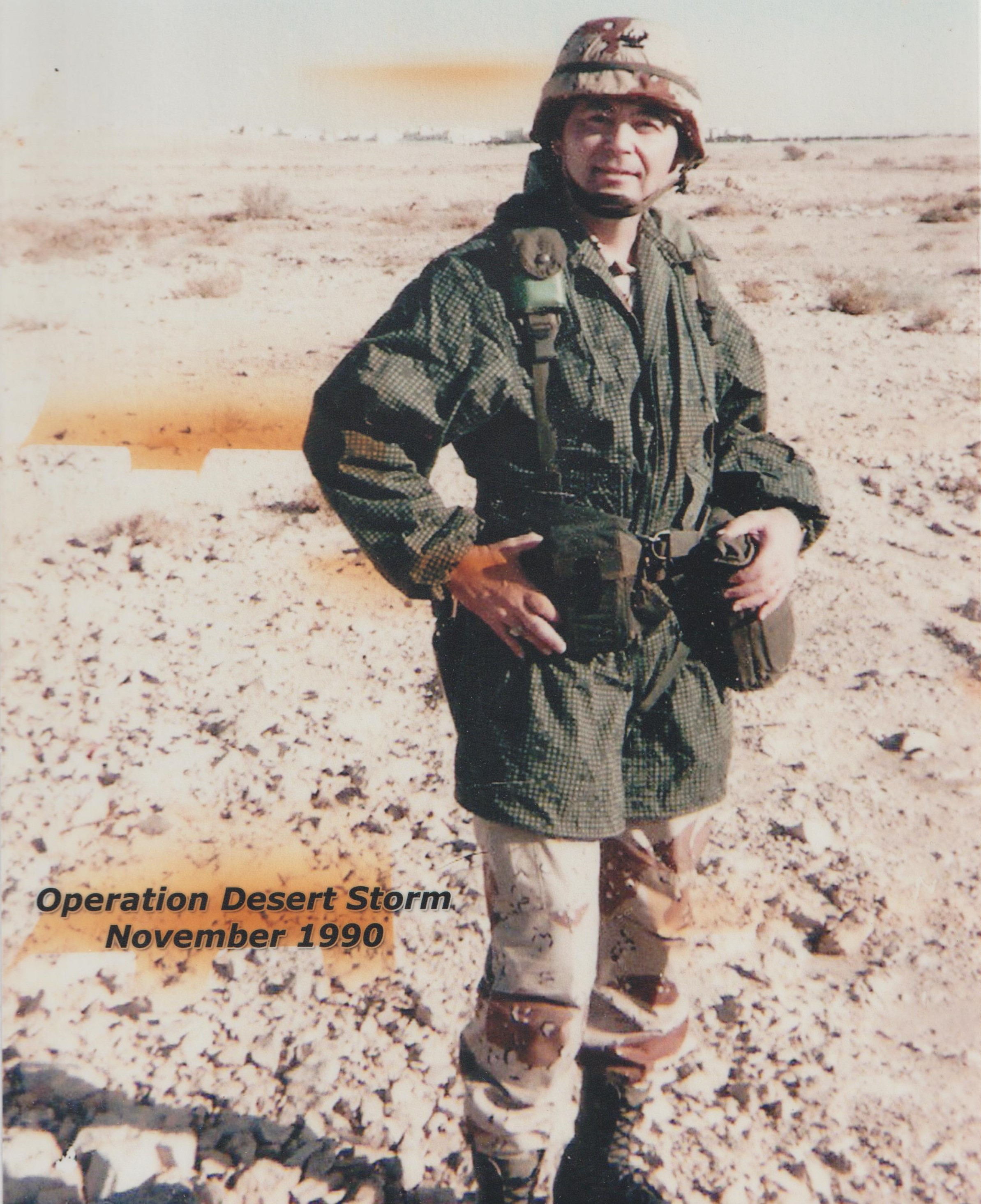
CENTCOM
MacDill Air Force Base, Florida
1989-1992
 U.S. Central Command (USCENTCOM) located at MacDill Air Force Base, Tampa, Fla., is the unified command responsible for U.S. security interests in 25 nations that stretch from the Horn of Africa through the Arabian Gulf region, into Central Asia. USCENTCOM is one of nine unified commands in the Department of Defense. The command was activated in January 1983 as the successor to the Rapid Deployment Joint Task Force.
U.S. Central Command (USCENTCOM) located at MacDill Air Force Base, Tampa, Fla., is the unified command responsible for U.S. security interests in 25 nations that stretch from the Horn of Africa through the Arabian Gulf region, into Central Asia. USCENTCOM is one of nine unified commands in the Department of Defense. The command was activated in January 1983 as the successor to the Rapid Deployment Joint Task Force.
My time with CENTCOM was most difficult. Though I was the command's Engineer, the Engineer section was within the J-4, so I served under logistics generals who had little appreciation for engineer operations. My opinion is that this lack of appreciation went to the General Schwarzkoff level, making me wonder how we as engineers failed to gain the respect of such a senior officer.
At the unified command level, military and political operations often seem to merge, rightly so. And messages need to be fully coordinated within the headquarters so the left hand always knows what the right hand is doing, again rightly so. But in the J-4, the desk outside the general's office was occupied by a colonel we all thought was a bit full of himself. We seemed to often draft messages to try to "move" an action forward to have the messages come back from him with insignificant wording changes. We called these "happy to glad" changes. After a note went forward a couple of times and came back with trivial changes I tended to just file the message away - not worth the frustration. But there were days when this cork-in-the-bottle-of-progress colonel would be gone and I'd fill in. The word would quickly get out and Action Officers would soon come out of the woodwork to try to get their messages into the general. When they would come to me we'd have a small conversation. "Have you tried to get this through here before?" The answer was most often yes. "Why was it sent back?" The answers varied, but mostly for inconsequential stuff. "Okay, now explain it to me in small words." They did. "If this gets to the general how can we get in trouble with him or with anyone else?" They'd tell me. And then I'd either sign off on it myself or take it into the general and have him sign off after I'd briefed him. Yes, sometimes I sent it back for more work, but always with some very clear guidance and I helped get it back in the queue before the day was over. Mission accomplished.
The Engineer Section did have some good work to do. We engaged in various construction projects in the AOR, using funds from the Department of Defense and troops within the command. These projects took a bit of effort to program, plan, and execute, but they were very worthwhile. Some of my fellow Engineer Section personnel were Marine Lt Col John Trelease, Army LTC Ed Ruff, Air Force Lt Col Lance Brendel, and Navy Yeoman Robert Cain.
Travels in the CENTCOM area are not without interest. .....
Goat grabs
Eating with the right hand
I did some overseas travelling to view some of these projects. In one case in Kenya we had some troops there building an airfield, but at the same time they dug a well for the local villagers, whose ladies had to walk two kilometers with a jug on their head just to bring water back to their village. The well was pretty simple, just a hand pump on a concrete slab. When I was there, I asked to see the well, and also wondered how it was working out. I was told that the well was finished, but not open. They took me to the site, and there it was but it had barbwire all around. I asked, "What's happening here?" I was told that "they were waiting for authority to open the well." My reaction was, "WHAT?" It turned out that our Kenyan driver spoke the same dialect as the local villagers, and I sent him to invite them the well. Perhaps within 15 to 20 minutes we had 50 to 80 villagers of all ages at the well site. In the meantime I had the barbwire removed and tasted the water; it had a slight taste of salt, but it was drinkable. I will never forget opeming that well to the people, and the happiness on the faces and in their voices (we had a translator) was most evident. I explained that they could pump all they wanted since I was sure the well was far down into the water table. It was so, so neat to see the little kids splashing in the water and the smiles on everyone's faces. That night before I had learned that I would have to travel to Oman a day earlier. If you look at a map, you'll see that the straight line distance between Kenya and Oman is not all that great. The problem is that these countries have little in common so there is no direct flight from one to the other. I arrived back from my airfield visit to learn that the only way they could get me to Oman in time was by a flight that went through Holland. Yes, Holland. Check that on a map and you'll see how far around I had to travel. Things started off well enough. I hung around the airline counter until I could talk to the Manager there for KLM, and showed him my ticket, explaining that I was going to be a guest of his airline for some fair amount of travel time. He was good enough to upgrade my ticket to Scipio, and I slept most of the flight, having awakened at 4:30 that morning and catching a flight that didn't depart until 2:00 a.m. At Scipio, I was laying on a bench using my briefcase as a pillow, waiting for my flight to Oman to be called. Soon I heard, "Flight 2314, from Scipio to Oman, with one stopover in Tehran, will be departing from gate ..." Holy smokes. Tehran is in Iran!!! Visions of me being pulled forceably from the plane danced through my head. I ran to the counter, heart beating like mad. I said, "Tehran, I can't go there..." The counter attendant explained that the announcement was that the stop was in Dhahran (Saudi Arabia). Whew. But for a minute or so they had my complete attention.
Traveling through the mid-east was not always as exciting as above, but they were plenty interesting. The flights tend to leave in the late evening and you find yourself in places like London Heathrow at 6 a.m. waiting to catch an 11:00 a.m. flight back to the States. Of course you were up all day to catch the evening flight so there you are at British passport control with a day-old beard and all kinds of interesting stamps in the back of your passport, like from Oman, Jordan, Kenya, and Bahrain. And there is your luggage with bright red plastic tape all around it. And there you are with an airport security guard who is inspecting everything you own, to include taking the covers off pens. Of course when I got home, Bonnie was always there at the airport to meet me. And let me just say that Bonnie really knew how to welcome me home.
Of course the defining time with CENTCOM was Operation Desert Storm - the first Gulf War. Our 14 person engineer section (we were augmented by each of the subordinate commands) did the work that a two-star engineer command did in Vietnam - well it seemed that we did. The Saudis provided help for our construction needs and so did Japan.  Japan established a Gulf Peace Fund and the USCENTCOM staff offices prepared estimates of their specific needs. With the help of my staff, I prepared the Engineer estimate and it resulted in $600 million in Gulf Peace Fund monies allocated for theater construction projects. The Japanese made the use of these funds for construction in support of US Forces very easy to use and free of excessive paperwork or bureaucracy. The various component commands, mainly ARCENT, MARCENT, and AFCENT; developed estimates for needed projects. What type projects rise to the level of the CENTCOM Engineer: Those mostly requiring contract construction focused on major theater-growth: covered and uncovered storage areas; airfield improvements such as increased apron space for parking, extended taxiways, and combat turn pads for aircraft refueling; and ammunition storage areas. USCENTCOM inserted a layer of command oversight by having me brief the USCENTCOM Deputy Commanding General, LTG. Calvin A. H. Waller, on a weekly basis. I knew Waller, then a Major General and Commanding General of the 8th Infantry Division when I was Commander of the 130th Engineer Brigade and V Corps Engineer. Let me just say that the meetings were mostly perfunctory. Once he approved projects, we turned them over to Japanese contractors in the theater who often subcontracted the work - which got done. We managed the Gulf Peace Fund well and the resulting construction projects were very beneficial to the war effort. I am very, very proud of the magnitude of what our small Engineer Section accomplished in this regard.
Japan established a Gulf Peace Fund and the USCENTCOM staff offices prepared estimates of their specific needs. With the help of my staff, I prepared the Engineer estimate and it resulted in $600 million in Gulf Peace Fund monies allocated for theater construction projects. The Japanese made the use of these funds for construction in support of US Forces very easy to use and free of excessive paperwork or bureaucracy. The various component commands, mainly ARCENT, MARCENT, and AFCENT; developed estimates for needed projects. What type projects rise to the level of the CENTCOM Engineer: Those mostly requiring contract construction focused on major theater-growth: covered and uncovered storage areas; airfield improvements such as increased apron space for parking, extended taxiways, and combat turn pads for aircraft refueling; and ammunition storage areas. USCENTCOM inserted a layer of command oversight by having me brief the USCENTCOM Deputy Commanding General, LTG. Calvin A. H. Waller, on a weekly basis. I knew Waller, then a Major General and Commanding General of the 8th Infantry Division when I was Commander of the 130th Engineer Brigade and V Corps Engineer. Let me just say that the meetings were mostly perfunctory. Once he approved projects, we turned them over to Japanese contractors in the theater who often subcontracted the work - which got done. We managed the Gulf Peace Fund well and the resulting construction projects were very beneficial to the war effort. I am very, very proud of the magnitude of what our small Engineer Section accomplished in this regard.
If you wish to read some official documents where I am mentioned, they are in the US Army Corps of Engineers Engineering Pamphlet 870-1-50, The US Army Corps of Engineers in the Persian Gulf War.
-
Chapter 1, Shaping the Engineer Force
Chapter 2, The Corps of Engineers Responds
Chapter 3, Saudi Arabian and Japanese Support
Chapter 4, Engineer Construction
Chapter 5, Construction Contracts
Chapter 6, Supply Contracts
Chapter 7, Leasing Real Estate
If you wish to read some of my personal thoughts and experiences:


